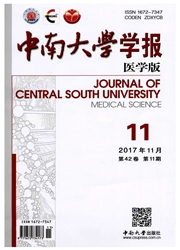

 中文摘要:
中文摘要:
目的:研究太空诱变宫颈癌细胞的生物学特性。方法:将搭载于“神舟四号”飞船飞行返地后的宫颈癌Caski细胞进行单克隆化,观察细胞形态、四甲基偶氮唑蓝(MTT)法测定细胞生长曲线初步筛选出变异株并测定其倍增时间、流式细胞仪检测细胞周期、软琼脂细胞集落培养和裸鼠成瘤实验检测空间诱变细胞的恶性表型。结果:单克隆化后获得1440株细胞克隆,发现空间诱变株出现多种细胞形态;MTT法筛选出4株变异株,其中有两株编号为44F10和17E3的细胞克隆生长速度快于对照组,其细胞周期分布改变,G1期细胞减少,S期细胞增多;而另两株编号为48A9和31F2的细胞克隆生长速度慢于对照组,其细胞周期分布规律与以上两株相反;地面正常对照细胞,地面模拟对照细胞,44F10,17E3,48A9和31F2细胞的平均倍增时间依次为56.54,58.44,52.96,51.46,101.76和88.47h,其中44F10和17E3与对照细胞组比较平均倍增时间降低但无统计学意义,而48A9和31F2与对照细胞之间的差异有统计学意义(P〈0.05);软琼脂细胞集落形成率依次为9.7%,9.3%,14.7%,12.1%,0和0.1%,诱变细胞与对照细胞之间的差异有统计学意义(P〈0.01);将6组细胞分别注射入裸鼠体内,47d后处死动物,各组裸鼠成瘤率为100%;剥离出肿瘤组织并称重,各组瘤块平均重量依次为0.066,0.066,0.175,0.249,0.011和0.018g,变异组与两对照组的细胞成瘤能力比较,差异有统计学意义(P〈0.05)。结论:实验证明空间环境可影响肿瘤细胞的生理特性,并且诱导细胞的变异是多向性的。
 英文摘要:
英文摘要:
Objective To investigate the biological properties of Caski cell lines induced by exposing to the space environment. Methods Caski cells were carried in " Shen Zhou Ⅳ " airship. After 7 days of spaceflight, cells survived and were monocoloned, and the experimental methods such as cell morphological observation, the cell proliferation assay, flow cytometry cell cycle analysis, the soft agar assay, and tumorigenesis assay were used to analyze cell growth characteristics and malignant phenotypes. Results Altogether 1 440 strains subclonal cell lines were established and 4 strains were screened. Compared with the control group, mutated cells appeared to have multiple cell morphological changes. Strains numbered 44F10 and 17E3 were screened due to their increased cell proliferation and tumorigenesis, and their cell cycles were induced to progress from G1 to S phase, while strains 48A9 and 31F2 were opposite to 44F10 and 17E3 in cytological events. The average population double time of ground nomal control group, ground simulant control group, strains numbered 44F10, 17E3, 48A9 and 31F2 groups were 56.54, 58.44, 52.96, 51.46, 101.76 and 88. 47 h, respectively; compared with the control group, the average double time of strains numbered 44F10 and 17E3 was decline, but with no statistical significance. However, compared with the control groups, the average double time of 48A9 and 31F2 was significant increased (P 〈 0.05). The colony formation rates were 9.7%, 9.3%, 14.7%, 12. 1%, 0 and 0. 1%, respectively, and the difference between the ground control groups and the other groups was significant (P 〈 0.01 ) ; 6 groups of above-mentioned Caski cells were inoculated subcutaneously in Babl/c nude mice respectively. Forty-seven days later, the formed tumors in the nude mice were statistically analyzed and tested. The average weight of tumors of the above-mentioned groups was 0. 066, 0.066, 0. 175, 0. 249, 0. 011 and 0. 018 g. The difference between the ground control groups and other groups was significant ?
 同期刊论文项目
同期刊论文项目
 同项目期刊论文
同项目期刊论文
 期刊信息
期刊信息
